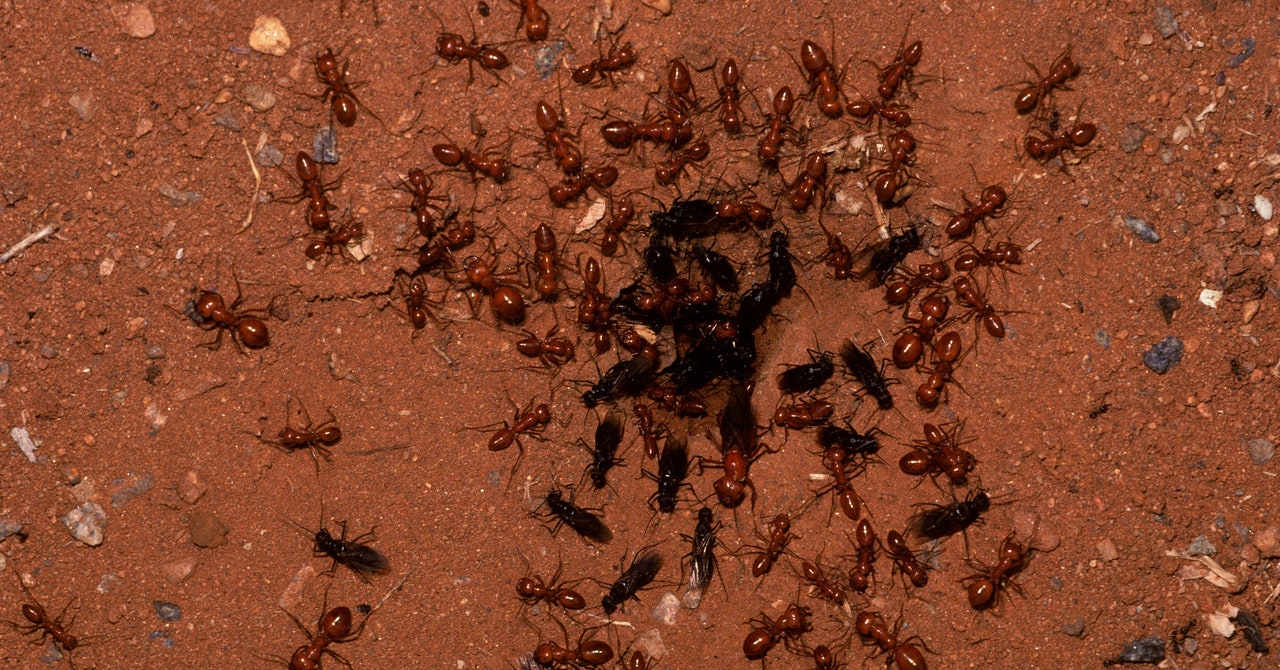This story originally appeared on Undark and is part of the Climate Desk collaboration.
Given that she infects ant colonies with deadly pathogens and then studies how they respond, one might say that Nathalie Stroeymeyt, a senior lecturer in the school of biological sciences at the University of Bristol in the U.K., specializes in miniature pandemics. The tables turned on her, however, in March: Covid-19 swept through Britain, and Stroeymeyt was shut out of her ant epidemiology lab. The high-performance computers she uses to track ant behavior sat idle, and only a lab technician—deemed an essential worker—was permitted to tend to the lab’s hundreds of black garden ant colonies, each housed in its own plastic tub.
With governments across the world now encouraging people to maintain space between one another to prevent the spread of the virus, Stroeymeyt drew parallels with her insect subjects. The current guidance on social distancing “rung familiar,” Stroeymeyt said, “because I’ve been seeing it among the ants.”
Such insights are at the heart of a burgeoning field of insect research that some scientists say could help humans imagine a more pandemic-resilient society. As with humans, fending off disease can be a tall order for social insects—a category that includes termites, ants, and many species of bees and wasps. Insect workers swap fluids and share close quarters. In most species, there is heavy traffic into and out of the nest. Some ant colonies are as populous as New York City.
The insects are “living in very confined environments where there’s a lot of microbial load,” said Rebeca Rosengaus, a behavioral ecologist who studies social insect behavior at Northeastern University in Boston. Many of those microbes, she added, are pathogens that could sweep through the colony like a plague. That rarely happens, social insect researchers say, and vast colonies of such species are somehow able to limit the spread of contagions.
Over the past three decades, researchers have begun to explore just how that might occur, mapping the myriad ways that colonies avoid succumbing to disease. Some of those methods can seem alien. Others, including simple immunization-like behavior and forms of insect social distancing, can seem eerily familiar. Put together, they form a kind of parallel epidemiology that might provide insights for human societies battling pathogens of their own–even if, so far, human epidemiologists don’t pay much attention to the field.
Still, those insights are what Rosengaus and some other researchers are now exploring. “How is it possible,” Rosengaus asks, “that an individual that gets exposed to a fungus or a bacteria or a virus, or whatever pathogen there is, comes back to the colony, and does not infect everyone in the colony?”
While social insects have been the subject of intense scientific scrutiny for more than a century, the threat of pathogens and other parasites, researchers say, was long overlooked. “The mainstream social insect research has ignored parasites for a very long time,” said Paul Schmid-Hempel, an experimental ecologist at the Swiss public research university ETH Zurich. Biologist E.O. Wilson’s classic 1971 survey of the field, “The Insect Societies,” does not even list “disease,” “pathogen,” “bacteria,” or “virus” in its index.
As a postdoctoral researcher at Oxford in the 1980s, Schmid-Hempel realized that the bees he studied were constantly infested with parasites. He began to formulate questions that would help launch a small field: What if pathogens were not an incidental nuisance to colonies, but a profound threat that shaped the very evolution of their societies? To what extent were things like ant colonies and beehives actually tiny epidemic states?
Observers of social insects have long known that th

